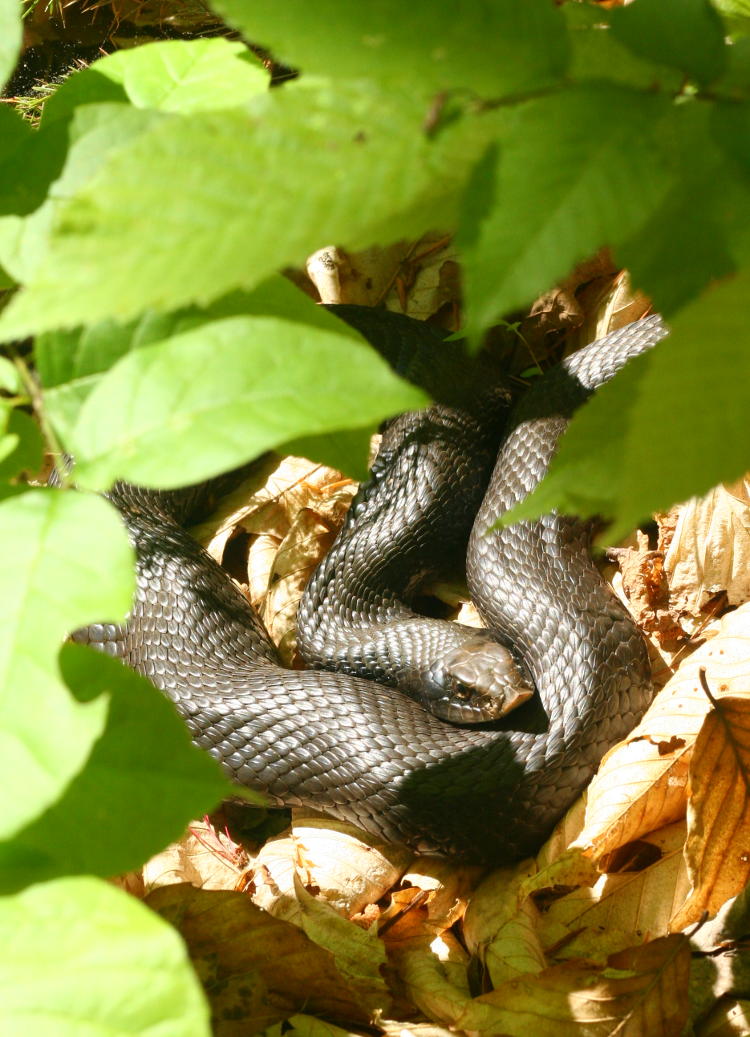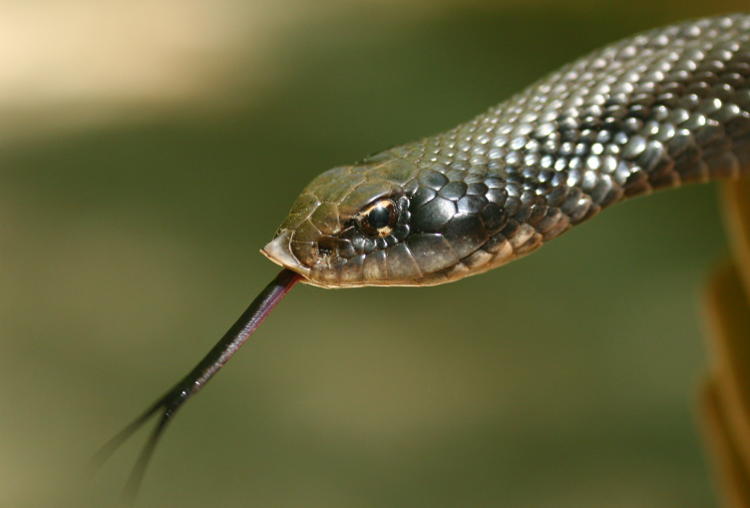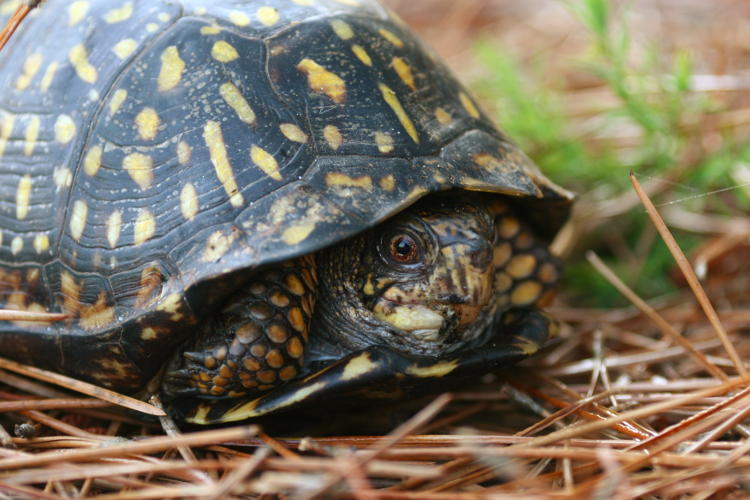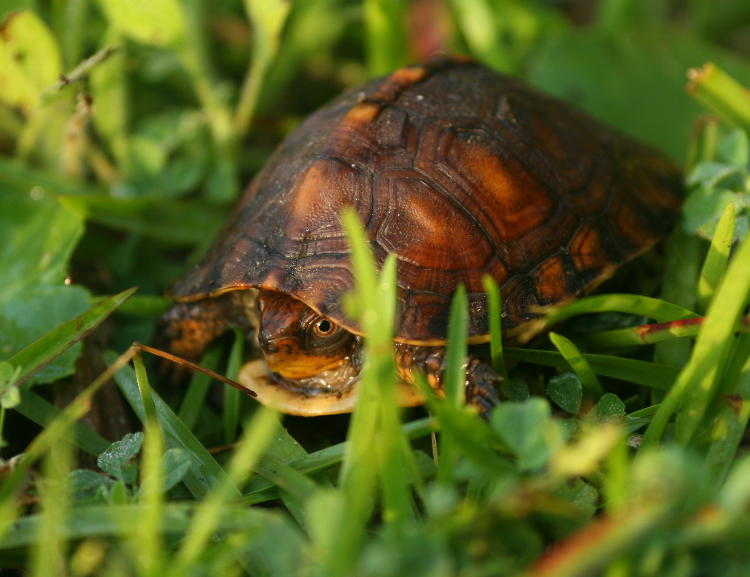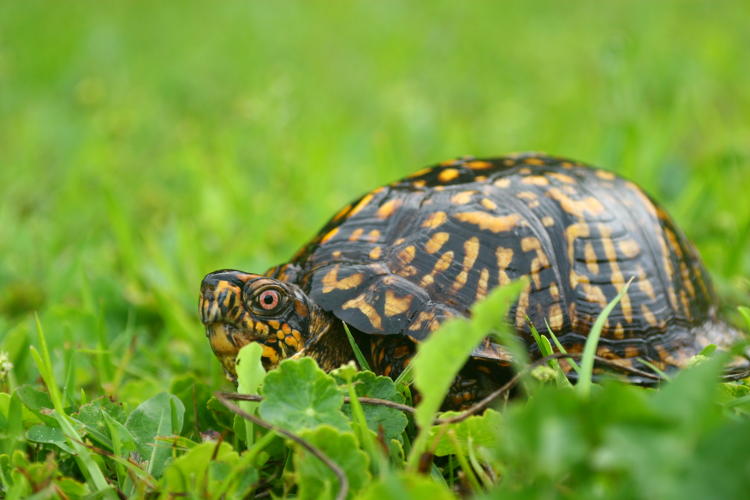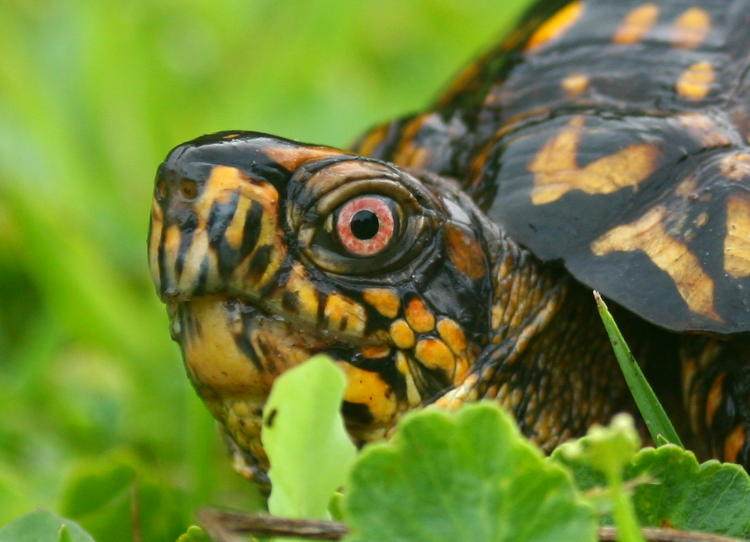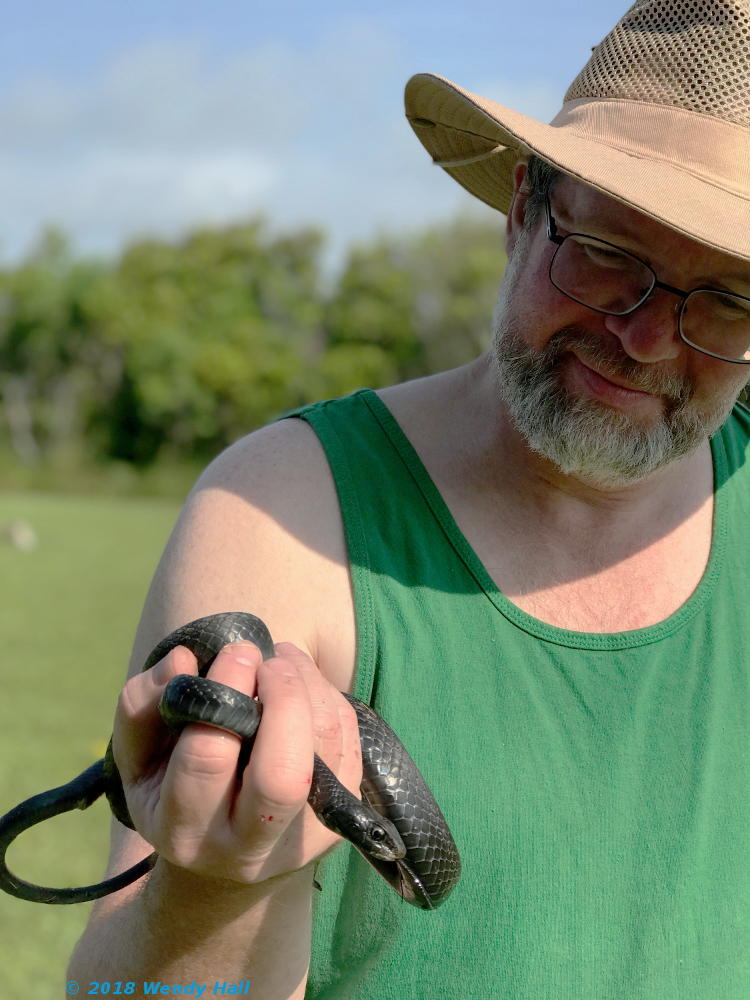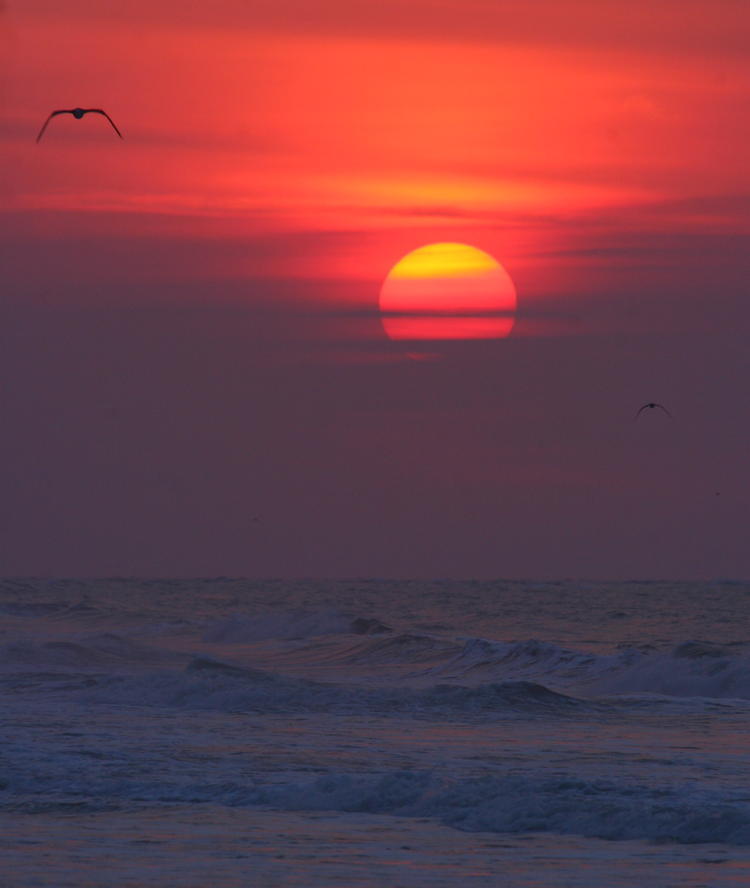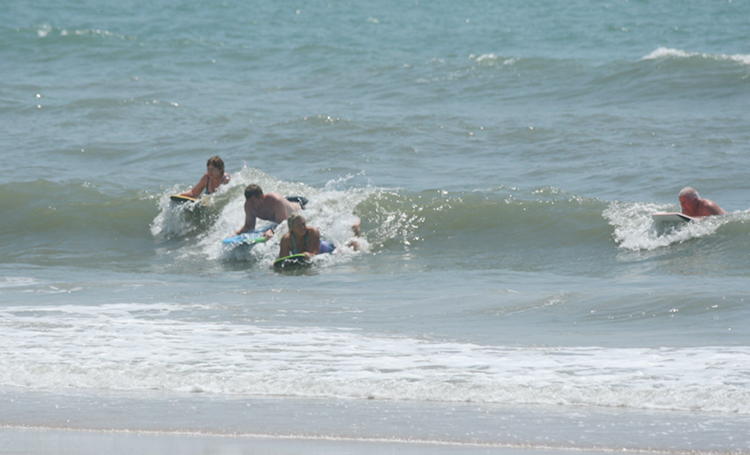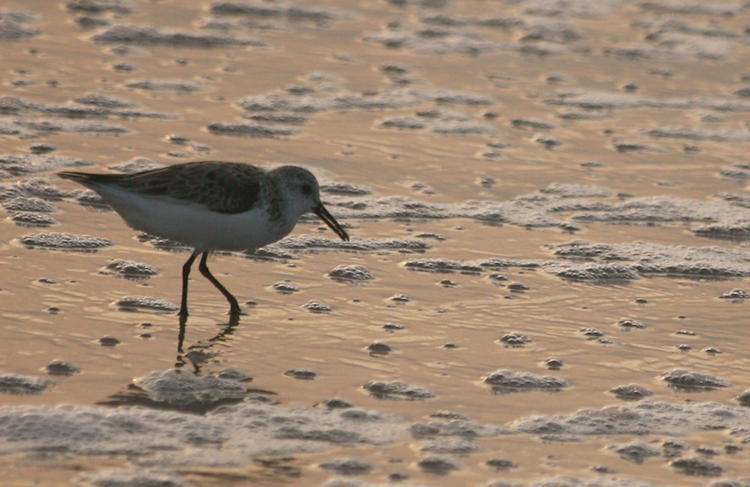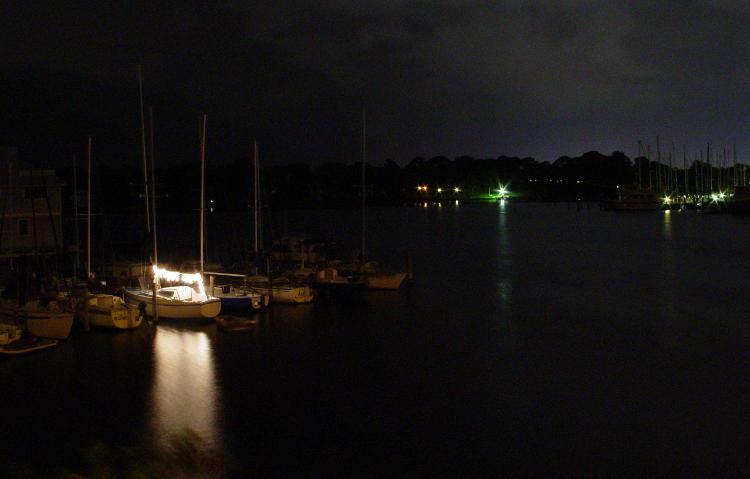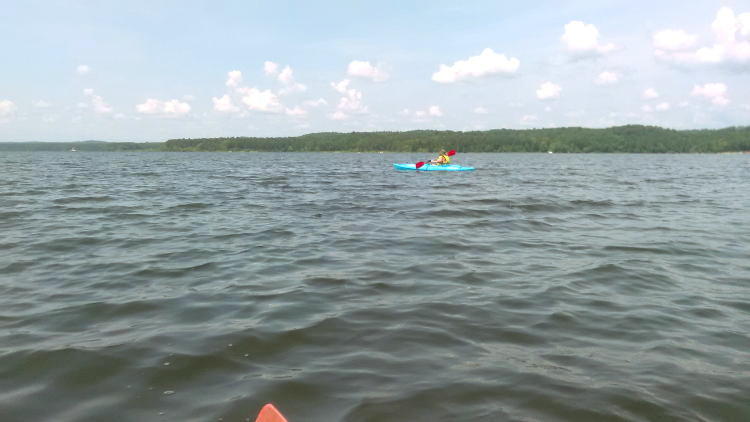
So first off, let me just assure you that we did get outdoors for National Get Outdoors Day (which was Saturday) – The Girlfriend and I took the kayaks out on Jordan Lake for a short excursion. “Short,” in part, because we’re still not conditioned to long kayak trips yet, but also because I had to be at work that afternoon. It was good to use the weekend for weekend stuff, or at least what most people think of as weekend stuff, which is relaxing and having fun. It doesn’t happen as often as we’d like… and by “we” I suspect I’m speaking for a lot of us.
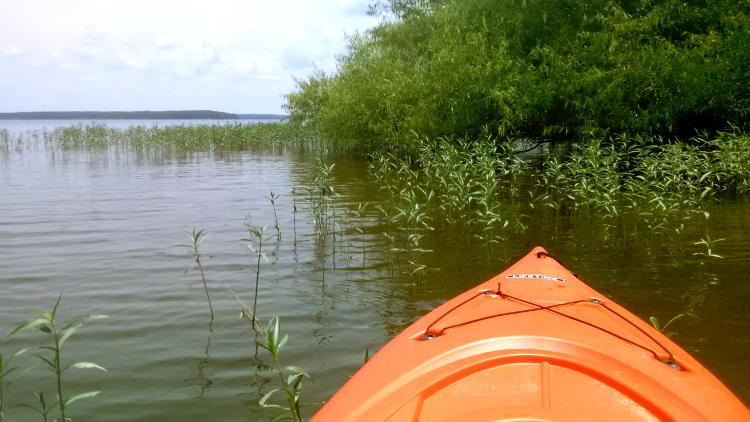
I feel obligated to say that these were taken [shudder] with a smutphone, but at present that little $20 jobby is the only thing I’m risking this close to water, and even then it was in a sport pouch. Perhaps later on I’ll be doing some real photography from the kayak – we’ll see how it goes.
But that’s not the topic of this post; the topic is last night. I have been working towards a kickass macro video rig, and yesterday evening it got a brief test, which seemed to be working fine – and then a component appeared to fail. Still working out the details, and I plan to be back with a video example as soon as I’ve got everything worked out. Right now, the clips I have are of a Copes grey treefrog and a six-spotted fishing spider sitting motionless for the camera, which might as well be still photos for all the action you can see, so I’m not going to bother uploading that. The point of macro video is, naturally, to show action, behavior, and interesting rude gestures from the wildlife that I encounter, and we’re still working up to that.
Later in the evening, as I sat at my desk figuring out the issues with the rig, I started hearing the faint rumbles of something, which could have been a neighbor wheeling their garbage cans to the curb, but they were going on too long and too frequently for that, so I checked the real-time lightning map to see what was happening. Sure enough, there were electrical storms in the region, though the map wasn’t showing any terribly close. I’m not sure if there was an updating issue (which I suspect) or if it simply wasn’t responding to the primary cloud-to-cloud activity, but on actually setting foot outside (even though it was Sunday now,) I could see the flashes, so I gathered camera (the real one) and tripod and went out to the pond.

The vast majority of what I saw was like that above, or worse; the activity was a little too distant for the low cloud cover, and just about every place locally has trees just like this which limit the low-angle view. Storms are best seen from places like mountaintops (not around here,) the beach (no luck while we were out there, though the report listed the possibility for several days of our stay,) or someplace like Kansas. Nonetheless, until I’m getting paid The Big Bucks for such things, I’ll just keep living right here and do what I can.

 And then, of course, you get the distinct bolt that just happens to appear behind an obscuring tree limb, even when the primary activity centers were on either side. In fact, I encountered the same thing with a storm last year, as seen to the left – distant activity mostly obscured by both clouds and the nearby horizon, and when something finally shows, it’s behind a tree from my perspective. You have to have a lot of patience with lightning photography.
And then, of course, you get the distinct bolt that just happens to appear behind an obscuring tree limb, even when the primary activity centers were on either side. In fact, I encountered the same thing with a storm last year, as seen to the left – distant activity mostly obscured by both clouds and the nearby horizon, and when something finally shows, it’s behind a tree from my perspective. You have to have a lot of patience with lightning photography.
 That same storm had it happen again, this time behind another tree. A lot of patience – it helps to remind yourself that this is only random and the ancient gods, like Fate and Sniggering, don’t really exist.
That same storm had it happen again, this time behind another tree. A lot of patience – it helps to remind yourself that this is only random and the ancient gods, like Fate and Sniggering, don’t really exist.
By the way, I did finally get a more distinct bolt in that storm, seen below. I’d prepped these images for a post then but never did write it up, so they’re being used now before they go bad.
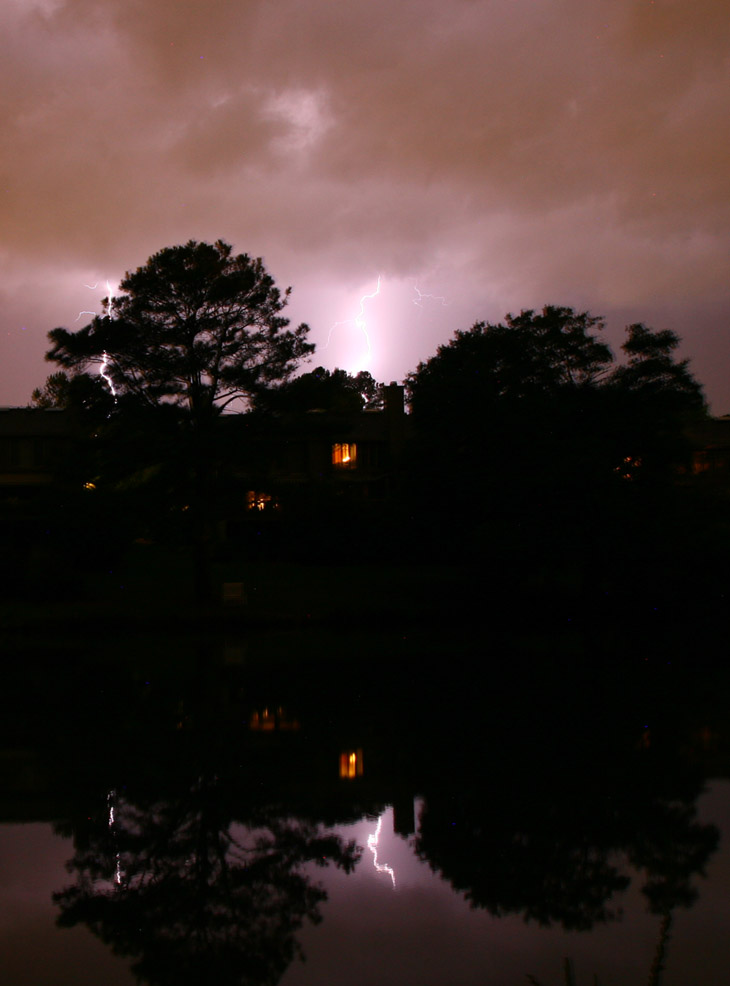
But back to last night. There was no rain, but a stiff breeze and pleasant temperature, and with the light show it was actually a nice night to be out. The frogs could still be heard calling down near the end of the pond, and the occasional plop! from fish taking a shot at the night insects would sound near my feet. Meanwhile, I just kept firing off the frames, hoping to capture something compelling. Eventually, I got a couple of simultaneous bolts that stretched across the sky.
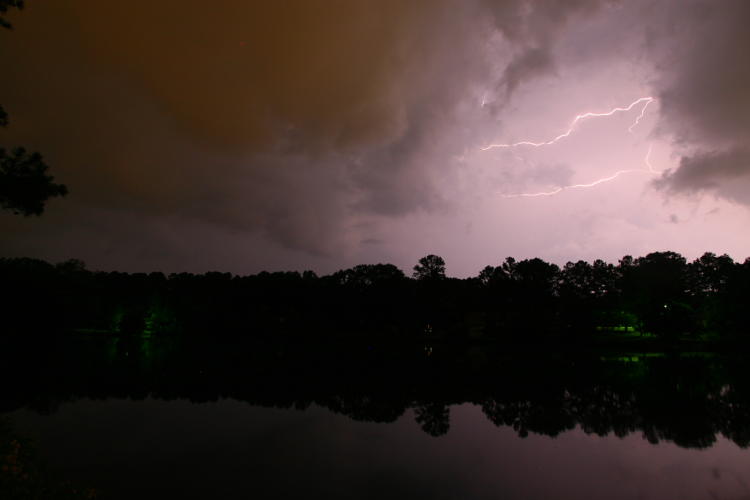
I feel it necessary to point out that this is shot at a 10mm focal length, which is someplace close to a ninety-degree view of the sky, so in person it appeared much more impressive. There were two primary centers of activity, though, spread well apart, so I was set to capture either one in any frame. Which is a little foresight from having done this too many times before; the region to the left was far more active, at least flash-wise, and had I focused tighter on that I would have missed this display, so go me, eh? And yes, I missed at least two visible bolts in the very brief periods between the long time exposures, averaging a second or three not shooting between 10-30 seconds with the shutter open and capturing, very often, nothing. Perhaps there really is a god of Sniggering.
But hey, that wide angle of view? It paid off a little better just a few minutes down the road.

That’s both active regions showing bolts in the same single exposure (which happened to be ten seconds in length.) I knew when I captured it that this particular storm was unlikely to produce anything much better. You can compare the two images above, which are the exact same framing, to see how much the clouds have changed in just a few minutes, but in person this wasn’t really noticeable – the light in the frame is mostly from the very brief duration of the bolts, with the ambient light from the nearby cities too dim to show much other than overcast. On occasion, I get some nice sequences which will show the progression of the storm clouds, but this isn’t obvious until I get back and unload the memory card.
I was noting, however, that the active region to the left seemed to be drawing closer, and the breeze was getting stiffer, often evidence of air being pushed ahead of a front – I guessed that rain was imminent. One bright flash gave me some hint of this, but again, this is so brief in person that you have to get a solid impression from the fraction of a second, which isn’t always accurate. The image yielded a lot more useful info, but after getting stung a few times with missed bolts, I was keeping the time between exposures (which also means the time peering at the preview images on the LCD back of the camera) to a bare minimum. Now we can see what I only got a fleeting impression of then.
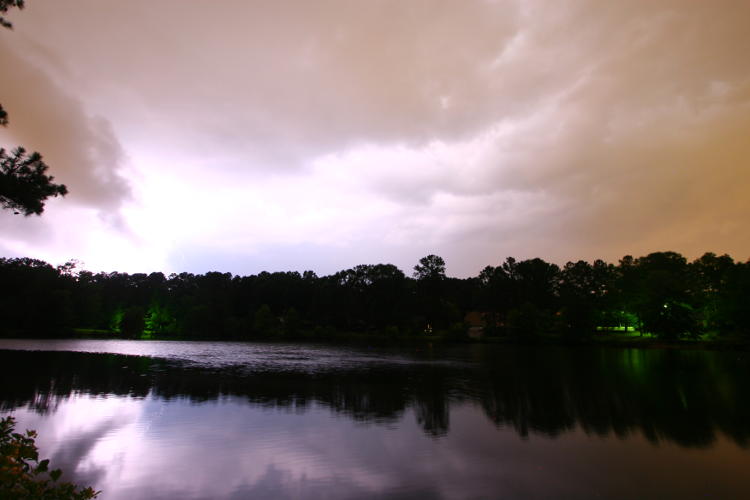
If I’d opened with this image, you might have believed that this was a daylight storm, or perhaps close to sunset, but then again I would have destroyed the elaborate narrative that makes these posts so captivating. Regardless, you can tell this one is a lot brighter and closer than anything else that I’ve shown you, or captured, and the crack of thunder was quicker in coming – this was only a few kilometers away to the northwest. The bolt is primarily obscured by the rain, which was illuminated by the strike, with a few tendrils visible off to the side, appearing from around the edge of the rain, I’m thinking. Let’s take a closer look at that portion.
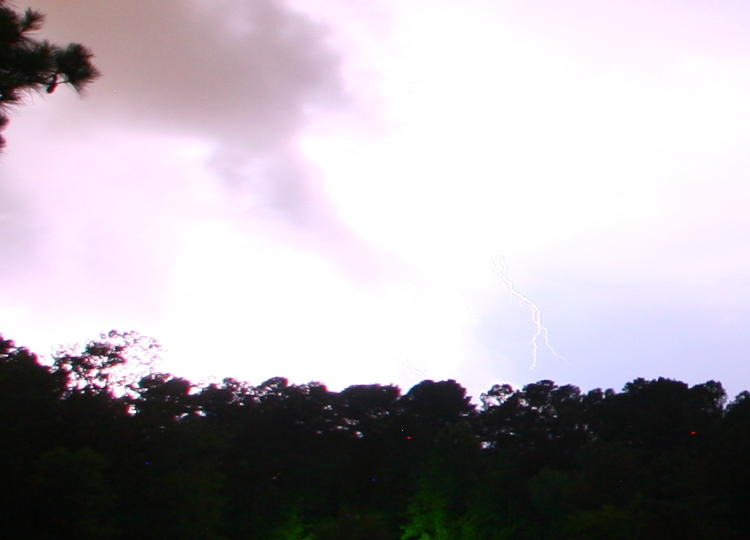
That certainly seems quite bright, like a blast of plasma signaling that a Terminator is arriving, making the visible branches of the lightning (there’s another at the treeline to the left of the obvious one) look trivial. That’s a close strike within a heavy rain, and a bit foreboding.
Almost immediately after this, I was aware that the flashes were now extending much more overhead, meaning I was underneath the active region and much closer to a strike zone – not a good place to be. I could also see a block of low-level clouds moving rapidly into the area, which if nothing else would obscure any lightning except that too close for comfort but might also herald the arrival of the rain, so I started packing my stuff up. The hike back to the house is three to five minutes, just to give you an idea. I was rounding the end of the pond as the first serious drops started falling, but was only halfway along the path that ran the width of the pond (the shorter side, which you’re looking across in these pics though the wide-angle gives an incorrect impression of how narrow it is) as it started pouring. I got soaked in that brief period before reaching the house, but the camera bag is water-repellent and I unpacked the equipment as soon as I was indoors – this is far from the first time that that’s happened, and too quickly to get out the disposable rain poncho that I carry routinely.
I was going to have a little addition to this post, because after changing my shirt, I stepped out onto the porch (mostly shielded from the rain) to record a sound file of the rain and thunder. I’ve done this before, but with a different recorder and without the driving wind that was now occurring, so this time around the audio quality was too poor to share. I had, for instance, lost the windscreen on the mic that I was using last night, so there’s lots of wind thumping, but also the wind chimes nearby and just the bad acoustics of the rain, so that linked audio post is a much better experience. And had it not been so dark, it might have been interesting to get video of the rain whipping past in sheets, falling at a diagonal and sailing off of The Girlfriend’s parked car out front as if it was tooling down the road at 100 kph. Definitely haven’t started the summer drought yet.





















































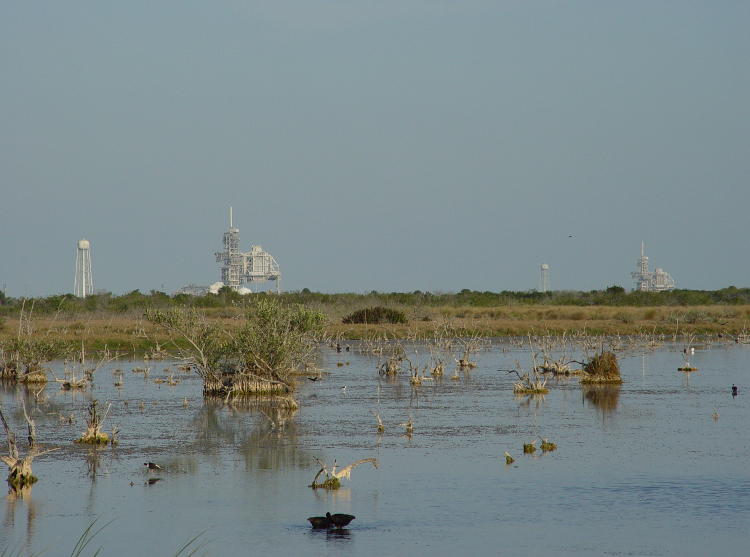
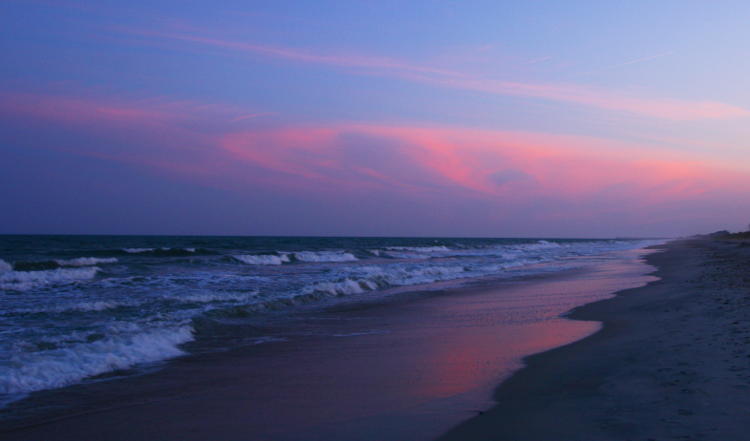
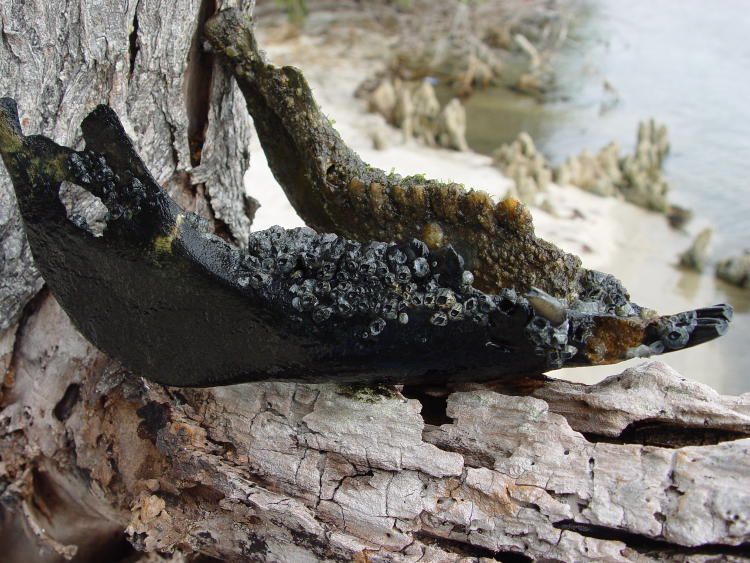
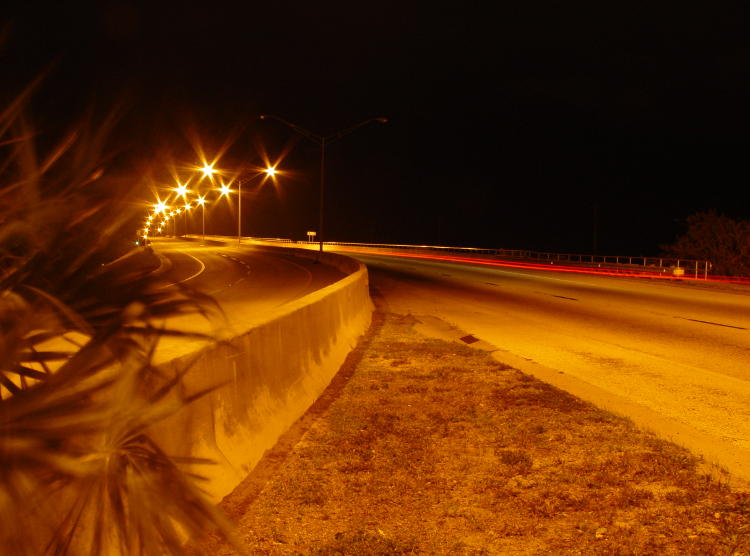
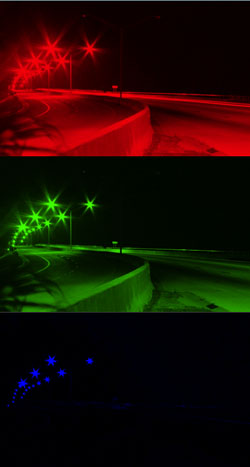 Now for the second bit, discovered when doing some editing some time back; I even prepped and saved an illustrating image, but ended up not using it. Until now. The streetlamps are sodium pressure bulbs, putting out that curious orange glow, which looks reasonably accurate in digital but renders much worse in Fuji Provia slide film. However, this provided an overall orange cast to the image – accurate for the conditions, but not exactly white-balanced, you know? So I tried editing the image to bring it more in line with white light, and couldn’t even come close. Then when attempting something else, I looked at the separate color channels and found out why.
Now for the second bit, discovered when doing some editing some time back; I even prepped and saved an illustrating image, but ended up not using it. Until now. The streetlamps are sodium pressure bulbs, putting out that curious orange glow, which looks reasonably accurate in digital but renders much worse in Fuji Provia slide film. However, this provided an overall orange cast to the image – accurate for the conditions, but not exactly white-balanced, you know? So I tried editing the image to bring it more in line with white light, and couldn’t even come close. Then when attempting something else, I looked at the separate color channels and found out why.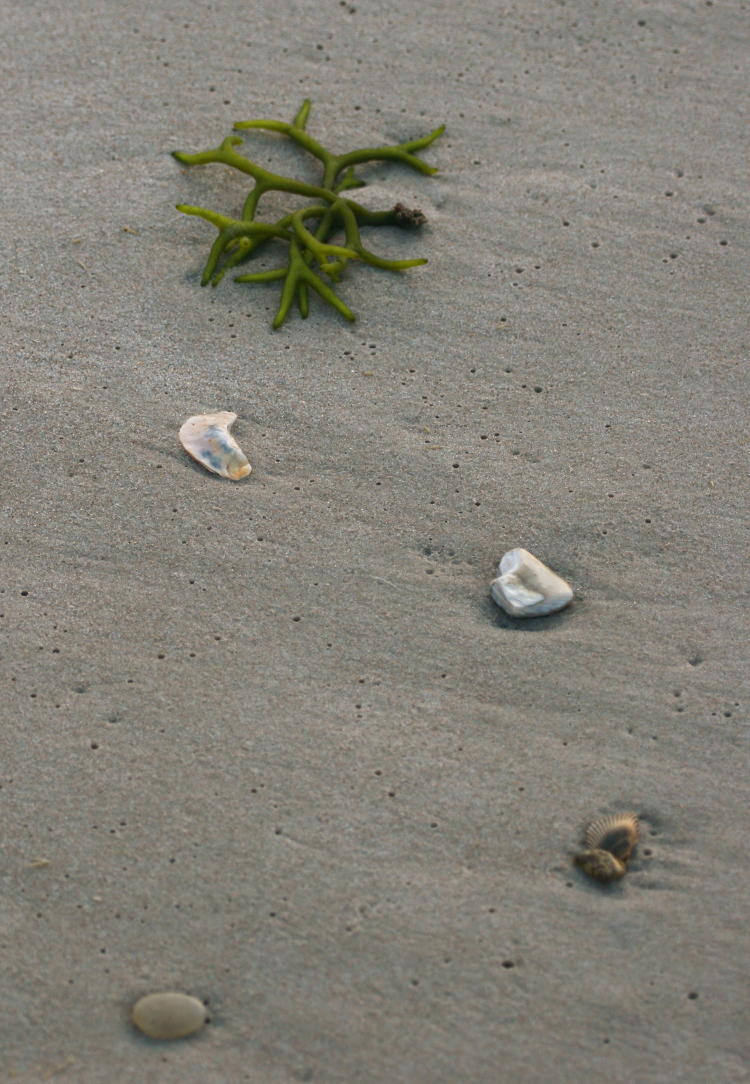
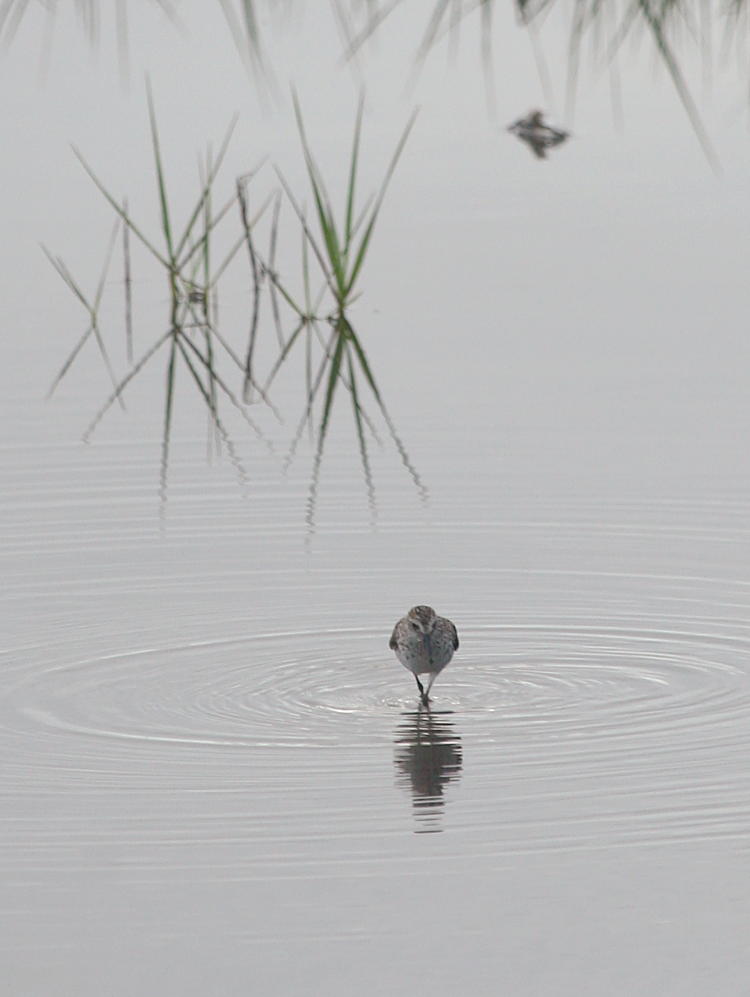
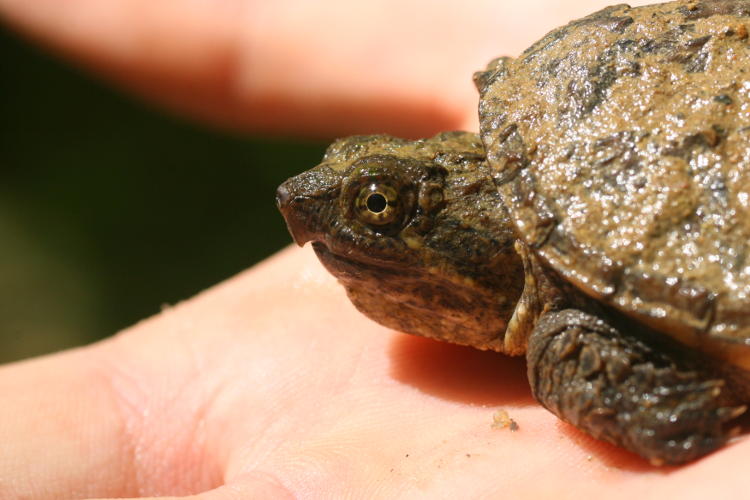
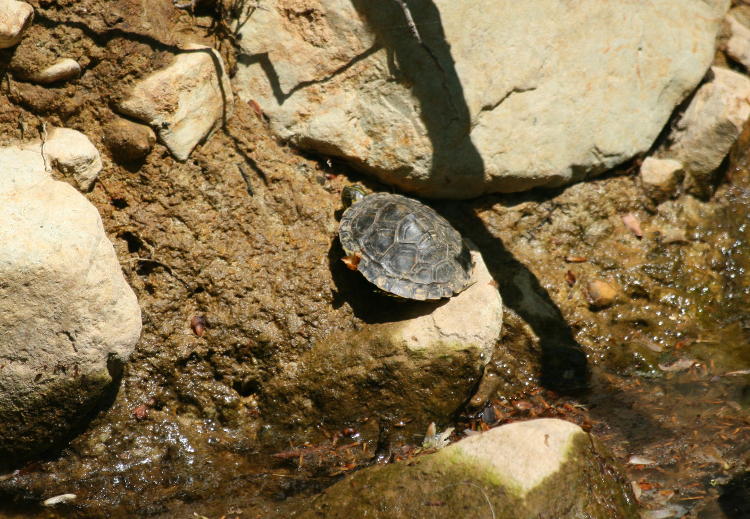
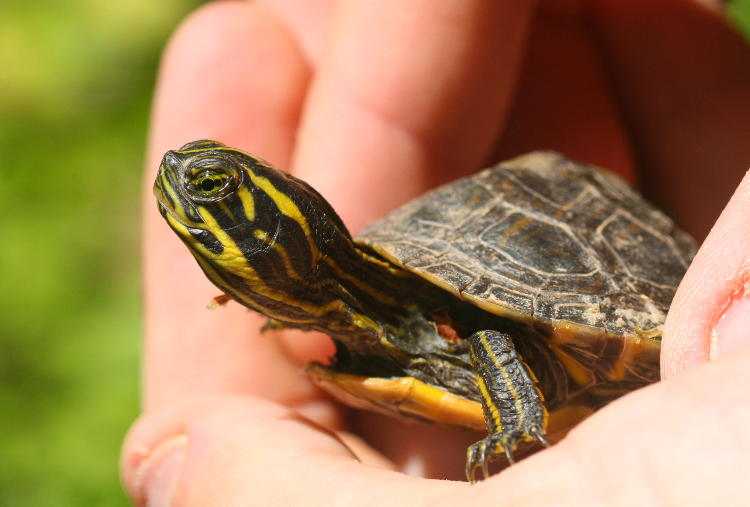
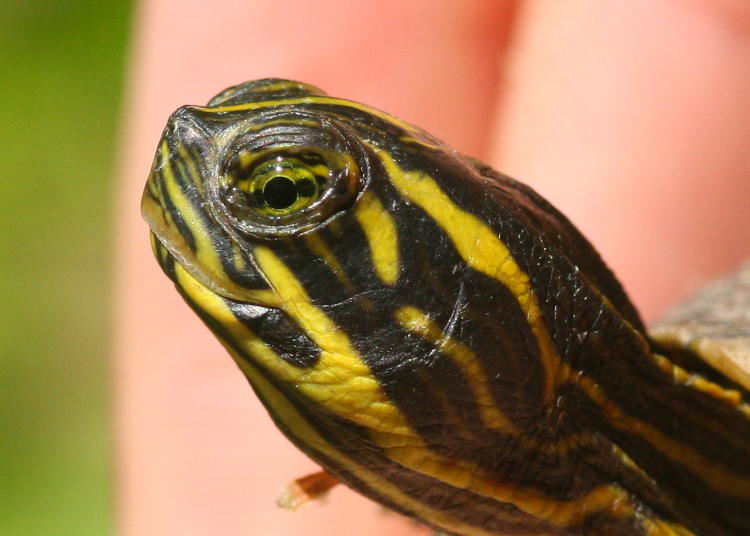
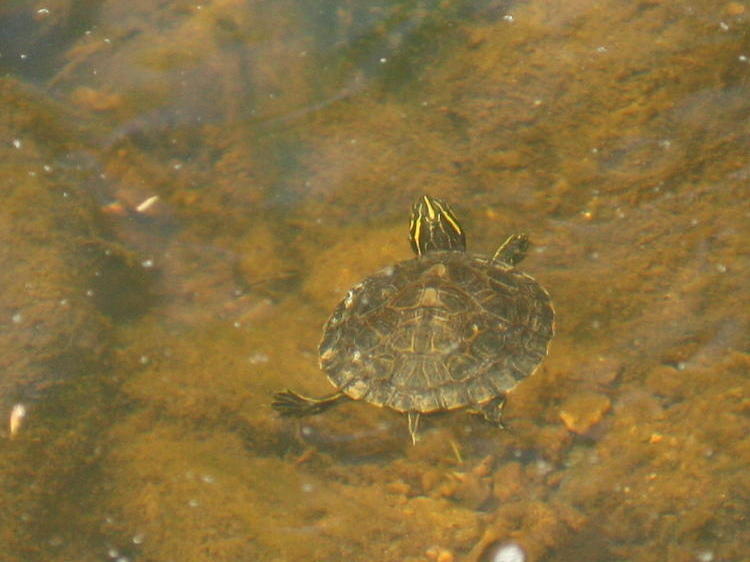
 But it didn’t go very far at all, actually. Within a few meters it found a rock protruding from the water and selected that as its new basking spot, pausing alongside and surveying the landscape for a bit to determine if it was safe – that’s the image that went with the
But it didn’t go very far at all, actually. Within a few meters it found a rock protruding from the water and selected that as its new basking spot, pausing alongside and surveying the landscape for a bit to determine if it was safe – that’s the image that went with the 